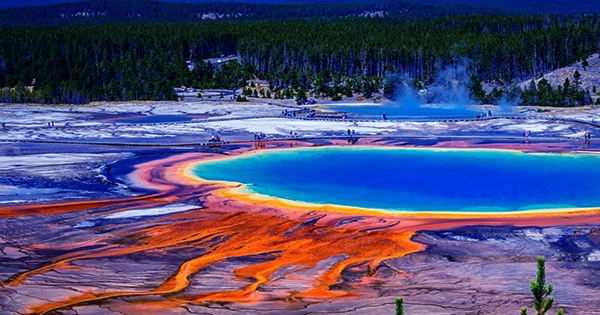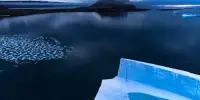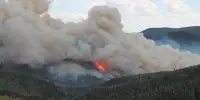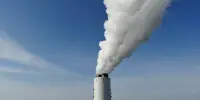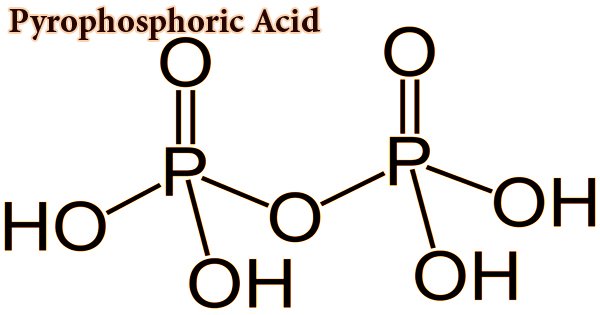Modern people have never observed a supervolcano eruption; if they had, they might not be alive today.
Because such an eruption would most certainly change the planet’s trajectory and send it on a completely different route.
Supervolcanoes differ from conventional volcanoes in that they have an eruption of magnitude eight on the Volcano Explosivity Index (VEI), which means that they spewed more than 1,000 cubic kilometers (240 cubic miles) of material at one point in time.
The most recent big eruption occurred in Indonesia on August 27, 1883, when Krakatoa island nearly collapsed in on itself, causing a massive tsunami.
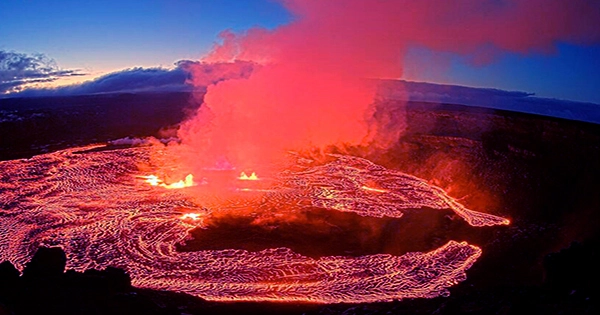
Despite this, Krakatoa is a typical earthquake, as opposed to its super siblings, such as the Yellowstone caldera in the United States, a supervolcano that experts have been warning about for decades.
Around two million years ago, volcanic activity began in the Yellowstone National Park region. Molten rock – magma — surged from deep below the Earth at that time, causing three cataclysmic eruptions more intense than any in recorded history.
Fortunately, no similar eruptions have occurred since, however, its potential volcanic activity was addressed in What If’s a short documentary, ‘What If the Yellowstone Volcano Erupted Tomorrow?’
“Right now, in the United States, one of the world’s largest volcanoes is gearing up to explode,” the narrator said. The consequences of a Yellowstone eruption would be catastrophic.
“It has erupted three times in the last three million years, prompting some to wonder if we should be concerned about another eruption in the near future.” However, if the eruption happened tomorrow and you lived in North America, there would be little you could do to prepare.”
In geological terms, the near future can be hundreds of thousands of years away, but the program looked at a possible scenario in which Yellowstone flowed lava.
Because the severity of an eruption would push much of the magma to soar into the sky, much of Yellowstone’s magma would not convert into lava.
While this is wonderful news for those who live nearby, it does not eliminate the risks and dangers linked with a different type of volcanic explosion.
It would actually inflict more damage, spewing clouds of ash throughout the United States and Canada, as far as far as Europe.
Tens of millions of people within a 1,000km (621-mile) radius would perish as the ash formed a cement-like mixture in the lungs, causing asphyxia.
Meanwhile, buildings would fall outside – just 30 cm (12 inches) of ash is enough to cause roofs to tumble in.
Outside of the 1,000km range, where at least a centimeter of the hazardous substance would have landed, ash would still be a threat to life.
Due to the persistent cloud cover, the world’s temperature would drop by roughly 10 degrees Celsius and last for up to ten years, resulting in what is known as a volcanic winter.
Crops, water supply, and the majority of other critical natural resources would be destroyed by the ash.
According to the United States Geological Survey (USGS), Yellowstone is behaving as it has for the past 140 years.
“The odds are very high that Yellowstone will remain eruption-free for the next several centuries,” the park has previously stated.
The region last experienced a massive eruption around 630,000 years ago; previous eruptions occurred 1.3 million and 2.1 million years ago.
This eruption is predicted to be 1,000 times larger than the Mount St Helen’s eruption in 1980, which caused $1 billion (£783,000) in damage.
According to Dr. Robert B Smith, a supervolcano researcher who spoke to Sky History, if Yellowstone erupted now, “devastation would be complete and incomprehensible.”
Professor Christopher Kilburn, a volcanologist at University College London (UCL), previously told Express.co.uk that it was a “myth” that the world’s supervolcanoes were being monitored.
“Imagine central parts of the US being knocked out of action, the wheat belt, all the agricultural producing areas would just be wiped out,” he said of Yellowstone.
